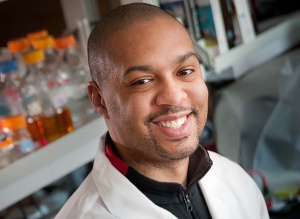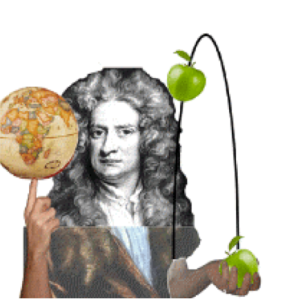This is a reprint from the St. Jude e-Insider, an internal publication, that I wanted to share. Enjoy!!
…
 Postdoctoral Research Associate Michael Johnson, PhD, Immunology, shares the attributes of asking “why.”
Postdoctoral Research Associate Michael Johnson, PhD, Immunology, shares the attributes of asking “why.”
I have two daughters: Michaela is 6, and Camille is 3. Right now, Camille is in her “why” phase.
“Why?”
“Because we need to clean up our toys.”
“Why?”
“So we don’t trip over them. Also, stepping on Legos hurts.”
“Why?”
Surely she knows that tripping over something is bad, or that stepping on something hurts, but it is almost a reflex to keep asking why. Interestingly, there is not a big what phase, or a how phase, or a where phase, so why is there a why phase. More importantly, how is that related to scientific outreach?
Many organizations are built with everyone knowing what they do, without knowing the how or the why. At St. Jude, we know the overall mission; we know the why. As a matter of fact, many people outside of St. Jude know the why too. The why makes St. Jude successful because the why is inspiring. As author Simon Sinek has pointed out, the why is at our core of emotion. Why leads us to the how and the what, not the other way around.
By doing scientific outreach, I get to share why I do science. I share the joy and satisfaction I get from helping people and inspire them to go out and do the same no matter what discipline they choose. I get to change their mindset of what an inner-city, Chicago-born, single-parent raised and public-school taught black male can achieve after having heard them and their parents say, “I didn’t know a scientist could look like you.” I get to invest in their futures.
“So what does a scientist look like?”
This is one of the questions I asked students at Bellevue Middle School—the St. Jude Adopt-A-School—where we provide resources like tutoring, a podcast, science experiment days (like DNA Day, which will be April 16 of this year)–and, where employees discuss their occupations for the Career Connections program. The “what does a scientist look like” question got a variety of responses from “someone with crazy hair” to “wears a lab coat” to “has huge glasses.” Inevitably, one kid would chime in and say “you” or “they could look like anyone.” From there we continue the conversation on why I do what I do and why I love science. I tell them what it feels like to be the first person in the world to know a new scientific fact, the Eureka! moment. I tell them about the people who are helped by the research that scientists like me do on a daily basis.
Once they understand the why behind it all, they want to know more about the “what.” Their curiosity is primed. The students engage in a scientific discussion. We talk about what I do as a scientist, about homework and we even compare scientific principles to superhero powers—by far, my favorite discussion.
With all the science misinformation, it is important for the next generation to be able to ask why, for them to be able to dig deeper and find the real sources of information. It is important to inspire them early and often and show them what could be, instead of what misconceptions tell them.
So, what do I get out of it? It is my opportunity to give back for what has been invested into me. It is essential to the why of my scientific journey.
MDLJ

